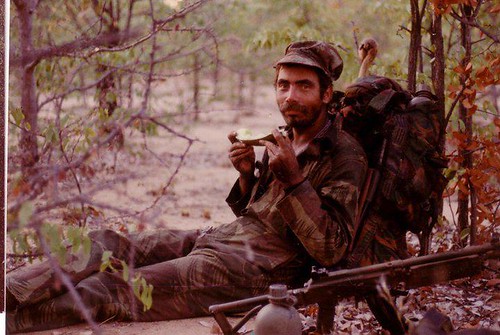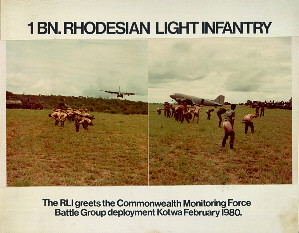Baptism of Fire
By Bill Dodgen
Extract from 'Reflections of a God Botherer' by Lt-Col The Rev Bill Dodgen, Sigma Press (Pty) Ltd, Pretoria, 1991, pp 1-7
I entered the Rhodesian Army as a chaplain at the start of the escalation of the bush war. If I had had any romantic thoughts when I was commissioned into the Rhodesian Army as Chaplain with the rank of Captain, my very first task on my very first day shattered them.
Having been welcomed by the Chaplain General, Norman Wood, I had a feeling of intense pride as I sat in that (Norman’s) dingy office. At last a dream had come true - a dream of being a minister and a soldier, woven into one. A chaplain at last, and not in just any army, but in the ‘greatest little army in the world’ – the Rhodesian Army.
Just then the sergeant from the Communications Centre arrived with the usual pile of notifications of injuries. Reading through them slowly, Norman’s face turned grey. He glanced at me over the signals in his hand.
“This is bad news, Bill. There has been an ambush and four young men have been killed. Sorry to spring this on you like this, but the deep end is the best place to learn. Please inform the next of kin. Sergeant Thompson will drive you.”
In that moment I was gripped by panic. My throat closed up, my mouth dried and I could feel the perspiration running down my arms as I gripped those notices. For the first time I read the words ‘killed in action’. I felt like I needed a life jacket.
After praying together, Andy and I set out in his Land Rover. I began rehearsing what I would say, an exercise which later I was to learn was useless. The news I had was the worst kind, even if it was said in Shakespearean prose, or with the skill of a Demosthenes.
After knocking at the door of the first home on my list, a young girl opened the door.
“Ma, there’s an army bloke here! Something’s happened to Boetie!”
Within a few seconds the mother was there, wringing her hands on her apron.
“It’s not serious? Tell me it’s not serious,” she said.
The expression on my pale face must have given her no hope. Before I could tell her that her son was killed in ambush, she threw her arms up and began wailing and chanting “No! No! No! Not my boy. It’s all a mistake. Not my boy – my boy.” With a groan she collapsed into a chair, sobbing.
Andy and I just stood there as if hypnotized by the scene that followed. The entire neighbourhood came running in and turned the place into a den of wailing. Andy and I slowly retreated with promises to come back later.
By this time the news had travelled all over the suburb. Mothers whose sons were in the same unit were waiting on their doorsteps. The Land Rover pulled up outside the gate of the second home on the list and before I even got to the gate, the wailing began with masses of people being attracted to the source of the noise.
Travelling to the third family, Andy requested to remain in the Land Rover as the trauma was too intense for him. At that home, I encountered an aggressive attitude and had to remove myself promptly for fear of physical harm.
By the time the fourth family had been informed, it was almost 1400hrs.
Returning to Army Headquarters I informed Norman that all the families had been notified. He then passed this information on to Army Public Relations for release on radio and TV. “Security Headquarters regrets to announce the death in action of four members of the security forces …”
Behind that communiqué were hours of tears and torment. No one can fully appreciate the agony of soul experienced by chaplains who, called to be messengers of eternal life, find themselves to be messengers of death.
Having received the necessary forms for funeral procedures, I returned to the homes of those poor grieving people. There I was bombarded with questions as to how, when and where he died. If he suffered. Was his death slow? Not knowing the details myself, I could merely state what was reported in the signals from the unit in the field.
What a day! A day of such intense emotional stress. This was indeed a baptism of fire. The deep end could not have been any deeper.
Who was sufficient for these things?













Bookmarks